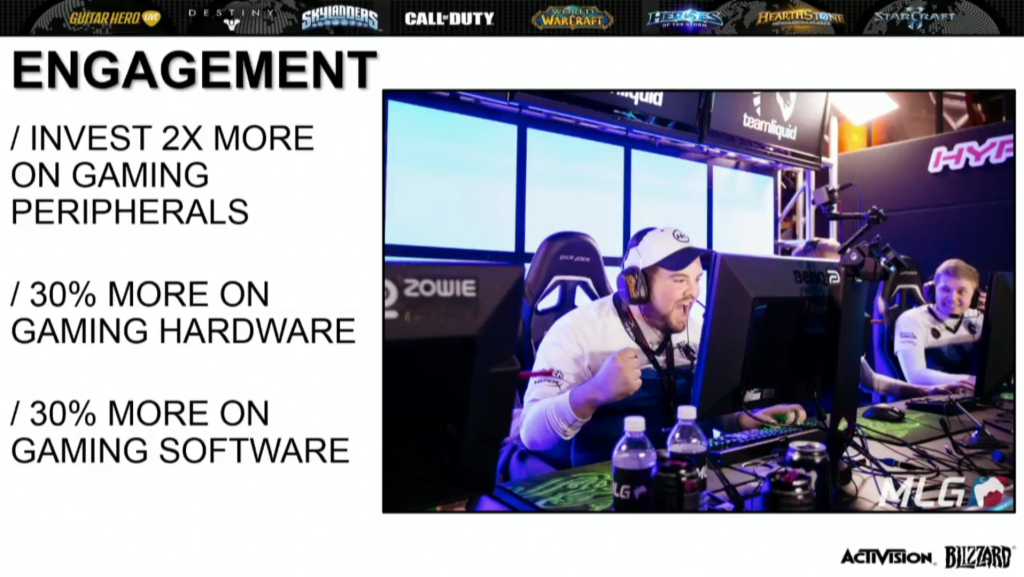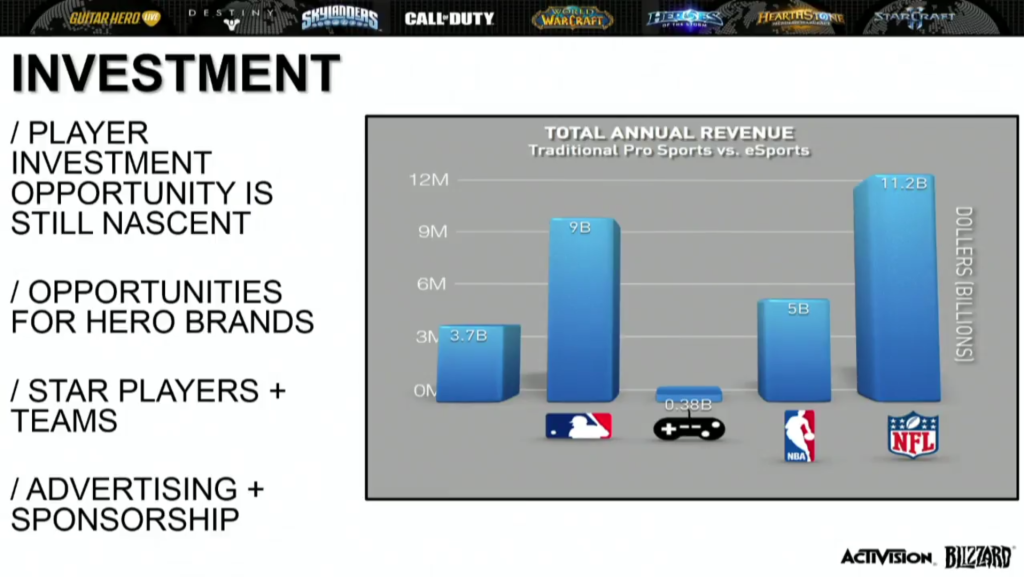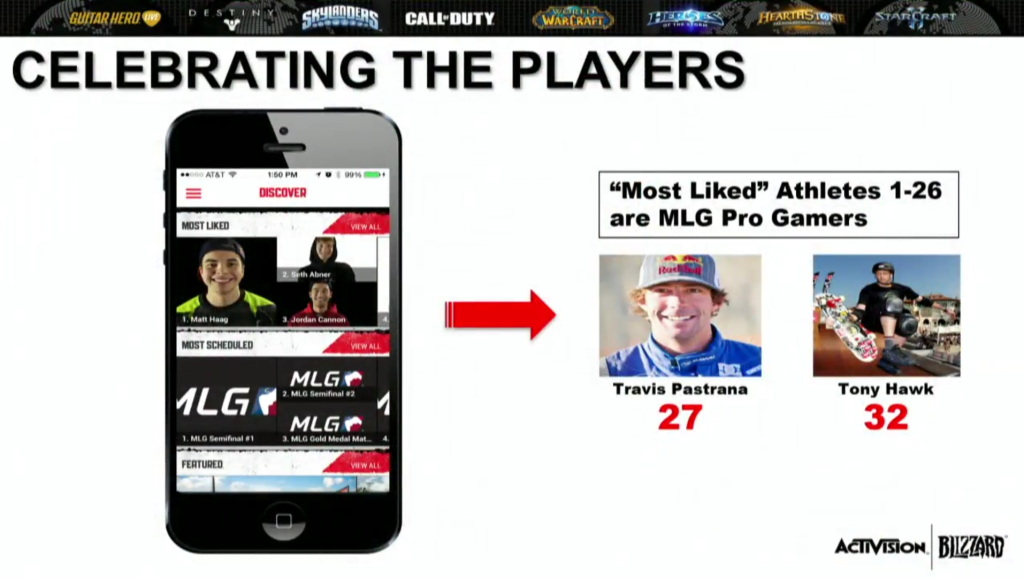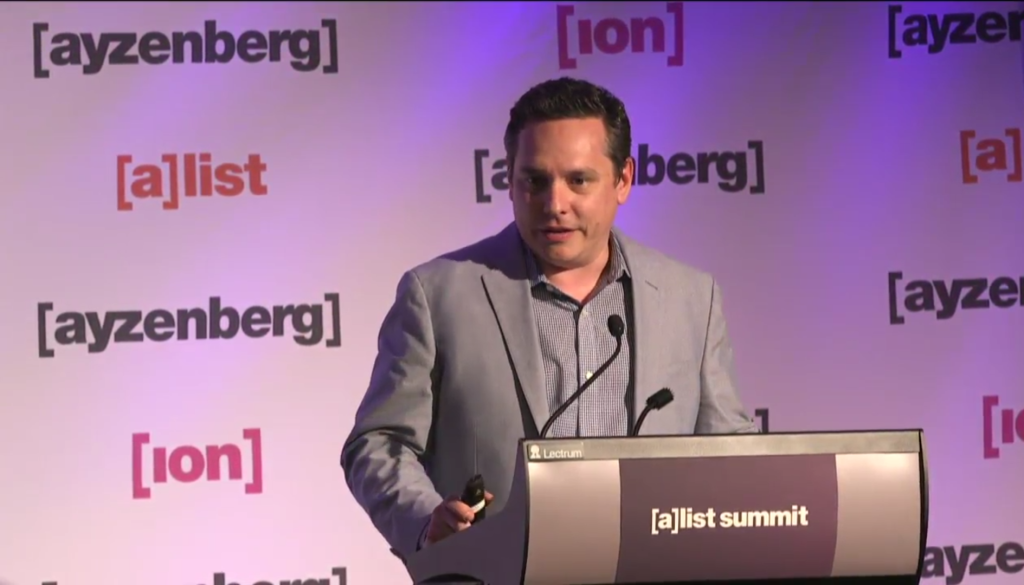Frontline is about being where your customers and prospects are, and many audiences are playing and watching video games, which helps explain the meteoric rise of eSports in recent years, and few people are as knowledgeable about eSports than Mike Sepso, head of Activision Blizzard Media Networks and MLG Co-Founder. His keynote speech at the [a]list summit outlined the growth of eSports, and how the Activision Blizzard Media Networks was working to bring it to mainstream audiences.
Together with Steve Bornstein (the former CEO of ESPN who launched the NFL Network), they are working to combine the best of eSports and traditional sports to appeal to a mainstream audience. In doing so, they will help mature the eSports and turn it into a sustainable business, which will galvanize what hundreds of millions of fans around the world have done when they turned a passion project to a real business.
“In the simplest terms, eSports is just competitive gameplay,” Sepso explains. “It’s me playing you in Call of Duty, Counter-strike, or whatever your favorite game is. And just like football or basketball, there are professionals who do this, with professional broadcasts and professional broadcasters announcing the games. There are lots of amateurs trying to make it into the big leagues, and most importantly, there are millions of passionate fans who really love and engage with this as a sport and are really focused on the personalities behind the sport and drive it forward.”
For Sepso and those at Activision Blizzard, this is an opportunity to not only build an interesting and big new media business, it’s also about celebrating these personalities. ESports personalities are just like any other athlete, who work really hard to perfect a skill. On question that often comes up is, “How do you know this is a sport, and not a bunch of people who happen to be very good at video games?”
Sepso responds by saying, “The skill gap between top professional players in eSports is very similar to me trying to play basketball against Lebron James.” It’s enormous, and a lot of that has to do with innate talent, but it also takes a lot of hard work.
ESports currently brings in over 100 million unique viewers worldwide. The sport, in aggregate, is bigger than the NBA in terms of viewership. That is a very far cry from 14-years ago, when the MLG started in hotel ballroom spaces, using folding tables and a lot of duct tape. Traditional sports have had decades and billions of dollars to invest in infrastructure and mature business models to drive it forward. ESports doesn’t have it yet, but it’s quickly getting there.
As evidence, Activision Blizzard recently hosted the biggest Counter-strike event in the history of eSports, the MLG CS:GO Major Championship, at the Nationwide Arena. It’s interesting to note that Counter-strike: Global Offensive, the game featured in the event, was developed by Valve, not Activision. Activision Blizzard Media Networks is out to push the whole industry forward, so it is working alongside companies that would otherwise be competitors to further grow eSports.
To demonstrate the strategy for bringing eSports into the mainstream, Sepso presented a video featuring Oleksandr “s1mple” Kostyliev, who is one of the best Counter-strike players in the world, and moved from the Ukraine to the U.S. to join Team Liquid. Sepso points out that the interesting thing about the video is that there is very little gameplay. When you think about traditional sports, it’s much less about the technicalities of the game or understanding the rules. It’s really all about understanding the personalities and storylines, and the Activision Blizzard Media Network is working to bring those personalities to the forefront.
ESports has grown from events where players had to bring their own Xboxes to sold-out sports stadiums, with tens of millions of people turning in over the course of the weekend. The Nationwide Arena, where traditional sports like hockey are normally played, was packed with ten thousand fans for the whole duration of the tournament. We’re not talking about two or three hour sporting events, either. These were 10-hour events held three days in a row.
Sepso remarked about how the experience was very much like attending a regular sport. Then he broke down what that meant in terms of numbers.
The CS:GO Major tournament brought in:
- 10 thousand live spectators.
- 71 million video views.
- 45 million hours viewed over the course of six days, globally. The event was broadcast in 15 different languages on a variety of digital platforms, but none were television.
- The peak was 1.6 million concurrent viewers across all the platforms, which is one of the largest eSports broadcasts in history, and the biggest for Counter-strike.
The next level is to get mainstream sports fans involved, and Activision Blizzard Media Networks is in the best position to do that. There are already 126 million eSports viewers globally, which is an audience that’s a little bigger than Major League Baseball, and just under the NBA. Projections show that next year will see over 300 million viewers globally.

Bringing eSports to the mainstream means opportunities such as monetizing at that level. Activision Blizzard Media Networks is working to bring the personalities and storylines to the forefront and help brands attach to them. There’s a tremendous amount of potential for brands to take advantage of. In terms of engagement, eSports fans spend twice as much on gaming peripherals, 30 percent more on gaming hardware and 30 percent more on gaming software. But the industry is still in the very early stages compared to the audience for on traditional sports.
The earned investment is significantly lower, as the four traditional major pro sports bring in about $29 billion in annual revenue, which comes out to $21 per viewer. ESports, on the other hand, earns $200 million, which is $2 per viewer. But using conservative projections, the growth of the audience will put eSports at about a $1 billion in revenue by 2018. So, not only is it big and scaling, it’s growing quickly.

Activision Blizzard wants to deliver the fans a lot more value. By driving up the value for brands and advertisers to get into this, they can help better monetize events, which means they can invest a lot more back into value propositions for players and fans.
Focusing on telling the stories of these interesting athletes is key to capturing the mainstream audience. Technically, Activision Blizzard Media is following traditional sports formulas to present a new kind of athlete to the world so that their popularity goes beyond those of hardcore fans. Not that hardcore fans should be overlooked, since they can be even more hardcore than traditional sports fans.

Two years ago, the ESPN Austin X-Games allowed eSports in, and it hosted an app that let fans “favorite” the different athletes. Positions 1-26 were dominated by eSports players, while well-known athletes like Travis Pastrana ranked 27. Sepso noted that eSports competitors have incredible fan engagement because they are “digital first, social media trained athletes.” They are in front of their fans “in a way that might make Kim Kardashian feel overexposed.”
Ultimately, Sepso concludes that it’s not really about the games, leagues or any of the technical stuff, which is still great for the core fans—it’s the storylines behind these talented young people.

